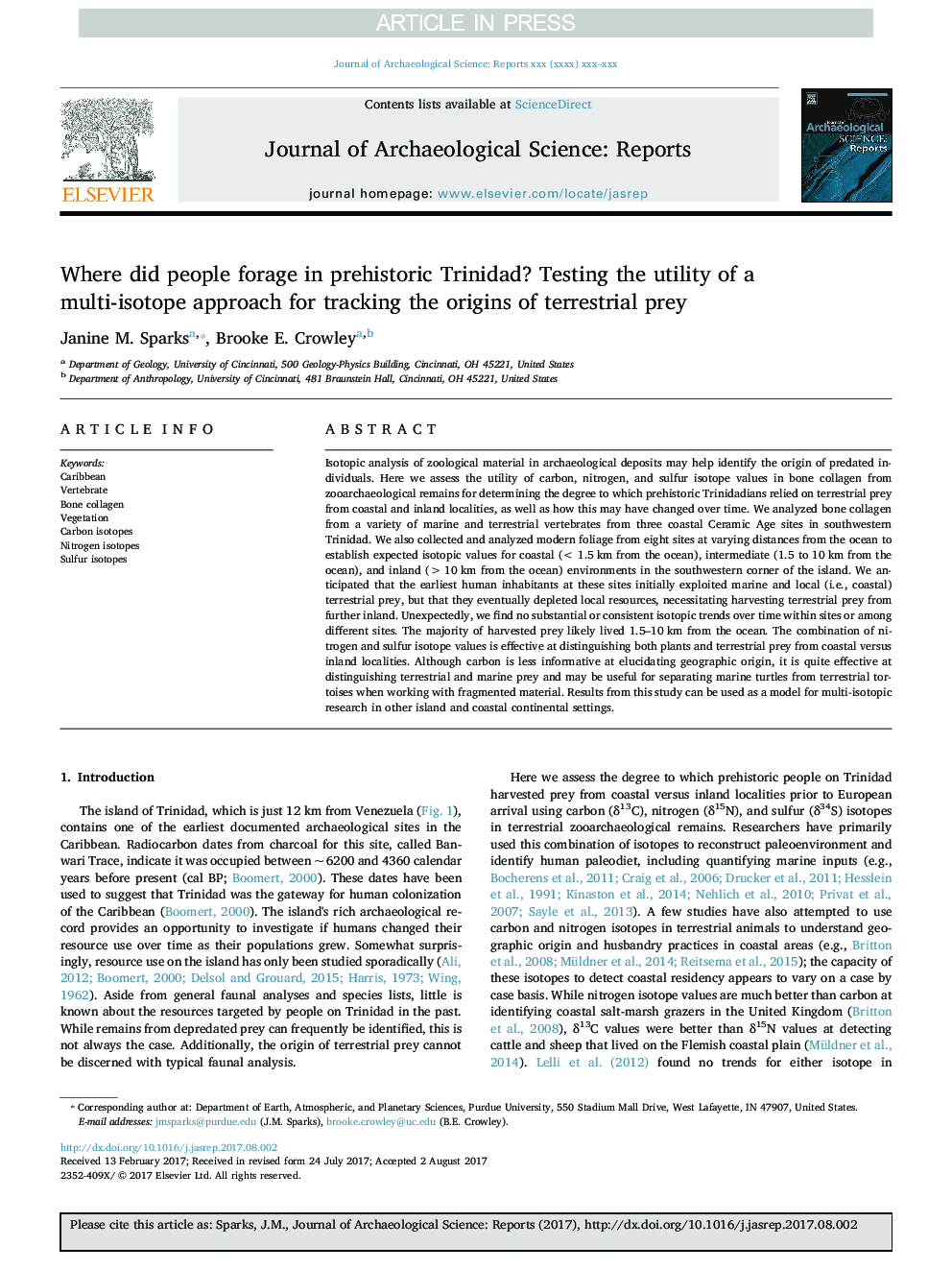| کد مقاله | کد نشریه | سال انتشار | مقاله انگلیسی | نسخه تمام متن |
|---|---|---|---|---|
| 7444363 | 1483924 | 2018 | 11 صفحه PDF | دانلود رایگان |
عنوان انگلیسی مقاله ISI
Where did people forage in prehistoric Trinidad? Testing the utility of a multi-isotope approach for tracking the origins of terrestrial prey
ترجمه فارسی عنوان
مردم قبیله ای در ترینیداد کجا خورده شدند؟ تست استفاده از روش چند ایزوتوپ برای ردیابی منشاء شکار زمینی
دانلود مقاله + سفارش ترجمه
دانلود مقاله ISI انگلیسی
رایگان برای ایرانیان
کلمات کلیدی
کارائیب، مهره داران، کلاژن استخوان، زندگی گیاهی، ایزوتوپهای کربن، ایزوتوپهای نیتروژن، ایزوتوپهای گوگرد،
موضوعات مرتبط
علوم انسانی و اجتماعی
علوم انسانی و هنر
تاریخ
چکیده انگلیسی
Isotopic analysis of zoological material in archaeological deposits may help identify the origin of predated individuals. Here we assess the utility of carbon, nitrogen, and sulfur isotope values in bone collagen from zooarchaeological remains for determining the degree to which prehistoric Trinidadians relied on terrestrial prey from coastal and inland localities, as well as how this may have changed over time. We analyzed bone collagen from a variety of marine and terrestrial vertebrates from three coastal Ceramic Age sites in southwestern Trinidad. We also collected and analyzed modern foliage from eight sites at varying distances from the ocean to establish expected isotopic values for coastal (<Â 1.5Â km from the ocean), intermediate (1.5 to 10Â km from the ocean), and inland (>Â 10Â km from the ocean) environments in the southwestern corner of the island. We anticipated that the earliest human inhabitants at these sites initially exploited marine and local (i.e., coastal) terrestrial prey, but that they eventually depleted local resources, necessitating harvesting terrestrial prey from further inland. Unexpectedly, we find no substantial or consistent isotopic trends over time within sites or among different sites. The majority of harvested prey likely lived 1.5-10Â km from the ocean. The combination of nitrogen and sulfur isotope values is effective at distinguishing both plants and terrestrial prey from coastal versus inland localities. Although carbon is less informative at elucidating geographic origin, it is quite effective at distinguishing terrestrial and marine prey and may be useful for separating marine turtles from terrestrial tortoises when working with fragmented material. Results from this study can be used as a model for multi-isotopic research in other island and coastal continental settings.
ناشر
Database: Elsevier - ScienceDirect (ساینس دایرکت)
Journal: Journal of Archaeological Science: Reports - Volume 19, June 2018, Pages 968-978
Journal: Journal of Archaeological Science: Reports - Volume 19, June 2018, Pages 968-978
نویسندگان
Janine M. Sparks, Brooke E. Crowley,
